Multichannel pipettes are invaluable when working with multiwell plates. However, prolonged and repetitive pipetting sessions bear the risk of strain and fatigue, often resulting in repetitive strain injuries (RSI) and less reproducible results.
ASSIST together with INTEGRA’s VIAFLO electronic pipettes form the perfect symbiosis to prevent users from RSI and to significantly increase the reproducibility of prolonged pipetting protocols such as serial dilutions, plate filling and reagent addition.
By mounting a VIAFLO electronic pipette on the ASSIST, the pipette’s protocols can be carried out fully automatically.
Our lab is extremely satisfied with the decision we made to purchase and incorporate INTEGRA’s VIAFLO multichannel pipettes and the ASSIST pipetting assistant into our daily work. We use the ASSIST for automated multichannel pipetting applications including serial dilutions for a variety of assays such as ELISA’s and proliferation assays. For assays in which repeat dispensing is needed, the ASSIST is also used for preparation of assay plates”. She added “Our lab also has a robotic system, but for lower number of plates the ASSIST is preferred because its set up is very quick”. The spokesperson concluded “Overall the consistency of assays has been improved due to the use of the new VIAFLO pipettes and the automated pipetting capabilities of the ASSIST. Because ASSIST is easy to use, more people within our lab are integrating it into their daily work routines. The ASSIST has also helped us to improve efficiency, for example when we perform sandwich ELISAs. While one plate is being coated with antibody or buffer, another plate can be washed on a plate washer, so that these different tasks can be done in parallel.
How it Works
1. Set up ASSIST - Based on your application, choose an 8-, 12- or 16-channel VIAFLO pipette and click it into the smart pipette adapter of the ASSIST. Load your multiwell plate and the sample container.
2. Select a pipetting protocol - For a quick set up, choose between three predefined pipetting protocols. For more elaborate pipetting needs, custom programs can be created. All programs are set up with the Touch Wheel controlled user interface of the pipette
3 Execute the pipetting protocol Press the ASSIST start button to initiate the fully automated processing of the selected pipetting protocol.
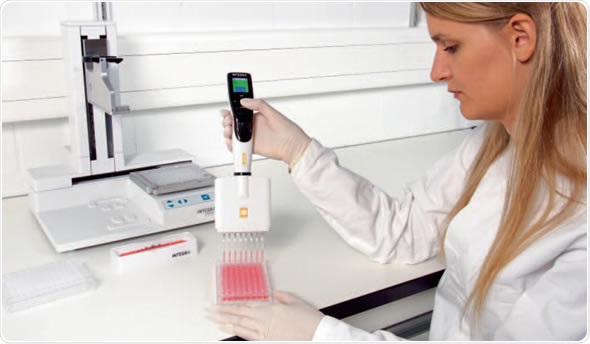
Labware Compatibility
You can use plates from 6-wells to 384-wells and work with them in portrait or landscape orientation. Samples can be aspirated from a 10 ml, 25 ml or 100 ml reagent reservoir, strip tubes, a multiwell plate or an external source.
Bluetooth
The communication between VIAFLO pipette and ASSIST is established via Bluetooth, supporting simple wireless connectivity.
Ergonomics
No matter how light and well balanced a pipette is, prolonged pipetting tasks remain physically and mentally challenging. While some steps always need to be performed manually, many other steps can be automated. To prevent RSI, caused by extensive repetitive motions, manual pipetting should be minimized. ASSIST lets you switch between essentially manual and optionally automated pipetting tasks on the fly, relieving you of much of the pipetting burden.
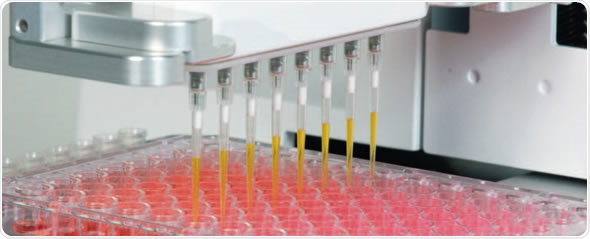
Better Pipetting Results
The major source of problems in pipetting performance are human pipetting errors. The tip immersion depth and pipetting angle might differ slightly from column to column even within the same plate. Both factors influence pipetting performance and can lead to ambiguous test results. Automating the pipetting procedure leads to reproducible results and eliminates errors.
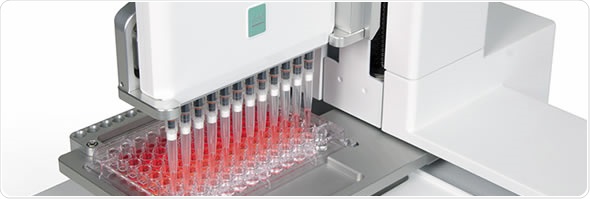
Application - Serial Dilutions
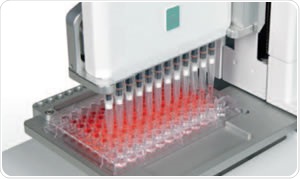 Serial dilutions can be tedious due to the many mixing steps that are required. ASSIST carries out your serial dilution protocols automatically. Simply define the number of mixing cycles, speed and mix volume.
Serial dilutions can be tedious due to the many mixing steps that are required. ASSIST carries out your serial dilution protocols automatically. Simply define the number of mixing cycles, speed and mix volume.
Serial dilutions are often carried out with the plate in portrait orientation. This allows more samples to be diluted. ASSIST allows working in landscape and portrait format.
The concentrated sample can be drawn from a reagent reservoir, a PCR tube strip and the plate itself (e.g. First column). In addition, the sample can also be aspirated with the pipette from an external source before placing it on the ASSIST and starting the protocol.
Application - Plate Fillings
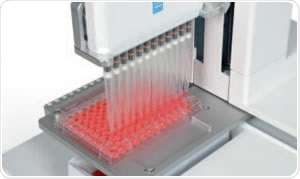 Filling multiple plates might not be a difficult task but is strenuous nonetheless. In order to improve pipetting ergonomics, manual pipetting should be minimized.
Filling multiple plates might not be a difficult task but is strenuous nonetheless. In order to improve pipetting ergonomics, manual pipetting should be minimized.
ASSIST helps you to fill microplates without risking repetitive strain injury.
Application - Reagent Additions
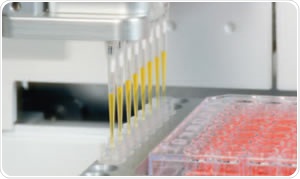 Draw reagent from the reagent reservoir, a PCR tube strip , the plate itself or an external source to add it to the target plate.
Draw reagent from the reagent reservoir, a PCR tube strip , the plate itself or an external source to add it to the target plate.
An optional mixing step helps to achieve a homogenous distribution of the sample.
For a precise liquid transfer and to make sure that no remaining liquid clings to the tip end, performing a touch off is common practice. ASSIST allows both a touch off on the side wall of the well or inside the liquid.